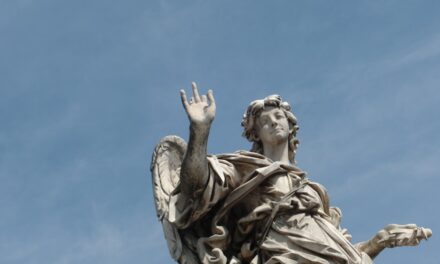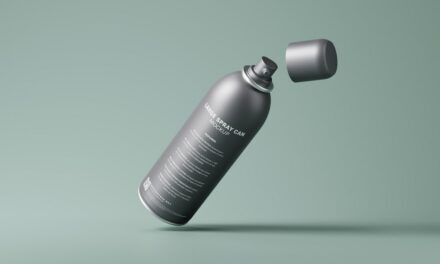Dye-sublimation is a printing technique that has gained significant traction in various industries, particularly in textiles and promotional products. At its core, dye-sublimation involves the transfer of dye onto materials through a process that utilises heat and pressure. This method is distinct from traditional printing techniques, as it allows for vibrant colours and intricate designs to be embedded directly into the fabric or substrate, rather than merely sitting on the surface.
The result is a durable and high-quality finish that is resistant to fading, cracking, and peeling, making it an ideal choice for items that undergo frequent use or exposure to the elements. The origins of dye-sublimation can be traced back to the 1950s when it was first developed for use in the textile industry. Over the decades, advancements in technology have expanded its applications beyond fabrics to include a variety of materials such as ceramics, metals, and plastics.
This versatility has made dye-sublimation a popular choice for customisation and personalisation in products ranging from clothing and home décor to promotional items and signage. As consumers increasingly seek unique and tailored products, the demand for dye-sublimation printing continues to grow, positioning it as a key player in the modern printing landscape.
Summary
- Dye-sublimation is a printing process that uses heat to transfer dye onto materials such as fabric, plastic, or paper.
- The process involves printing the design onto special transfer paper and then using heat and pressure to transfer the ink into the material.
- Materials and equipment for dye-sublimation printing include sublimation ink, a heat press, and compatible substrates such as polyester fabric or coated ceramics.
- Advantages of dye-sublimation printing include vibrant and long-lasting colours, while disadvantages include the limited range of compatible materials.
- Dye-sublimation is widely used in art and design for creating custom clothing, promotional products, and personalised gifts.
The Process of Dye-sublimation Printing
The dye-sublimation printing process begins with the creation of a digital design, which is then printed onto a special transfer paper using sublimation inks. These inks are unique in that they are formulated to turn into gas when heated, allowing them to penetrate the surface of the substrate. Once the design is printed, the transfer paper is placed onto the material that is to be printed, and both are subjected to high temperatures and pressure in a heat press.
This combination causes the dye to sublimate, or transition from a solid to a gas, which then permeates the fibres of the material. Upon cooling, the dye solidifies within the substrate, resulting in a vibrant and long-lasting image. One of the key advantages of this process is its ability to produce full-colour images with smooth gradients and fine details.
Unlike traditional printing methods that may rely on layering inks on top of one another, dye-sublimation achieves a seamless integration of colour into the material itself. This not only enhances the visual appeal of the final product but also ensures that the colours remain vivid even after repeated washing or exposure to sunlight. Furthermore, because the dye becomes part of the fabric rather than sitting on top, there is no risk of cracking or peeling over time, making it an excellent choice for items that require durability.
Materials and Equipment for Dye-sublimation

To successfully execute dye-sublimation printing, specific materials and equipment are essential. The primary requirement is sublimation ink, which is specially formulated to convert into gas when heated. This ink is typically used in conjunction with transfer paper that has been designed to hold the ink until it is transferred onto the substrate.
The choice of transfer paper can significantly impact the quality of the final print; therefore, selecting high-quality paper that complements the sublimation ink is crucial for achieving optimal results. In addition to inks and transfer paper, a heat press is an indispensable piece of equipment in the dye-sublimation process. Heat presses come in various forms, including flatbed presses and mug presses, each designed for specific applications.
The heat press must be capable of reaching high temperatures—typically between 180°C to 220°C—and applying consistent pressure across the entire surface area to ensure even transfer of the dye. Moreover, substrates suitable for dye-sublimation include polyester fabrics, polymer-coated materials, and specially treated surfaces that allow for effective dye absorption. Understanding these materials and equipment is vital for anyone looking to delve into the world of dye-sublimation printing.
Advantages and Disadvantages of Dye-sublimation
Dye-sublimation printing offers numerous advantages that make it an appealing choice for both businesses and consumers alike. One of its most significant benefits is the ability to produce high-quality prints with vibrant colours and intricate details. The process allows for full-colour images without any visible pixelation or banding, resulting in professional-grade outputs that are particularly sought after in fashion and home décor industries.
Additionally, because the dye becomes part of the fabric rather than merely coating it, prints are highly durable and resistant to fading, ensuring that products maintain their aesthetic appeal over time. However, despite its many advantages, dye-sublimation also has some limitations that should be considered. One notable drawback is that it requires specific types of materials for effective printing; primarily, substrates must contain polyester or have a polymer coating to facilitate proper dye absorption.
This can limit its application on natural fabrics like cotton unless they are treated specifically for sublimation. Furthermore, while initial setup costs can be relatively high due to the need for specialised equipment and inks, businesses must also consider ongoing costs associated with consumables such as transfer paper and ink cartridges. Balancing these pros and cons is essential for anyone considering adopting dye-sublimation as their primary printing method.
Applications of Dye-sublimation in Art and Design
Dye-sublimation has found a diverse range of applications within art and design, making it an invaluable tool for creative professionals. In the realm of textiles, artists can utilise this technique to create custom apparel featuring their unique designs. From t-shirts to sportswear, dye-sublimation allows for full-colour prints that can incorporate intricate patterns and images without compromising on fabric quality or comfort.
This capability has led to a surge in demand for personalised clothing items that reflect individual styles and preferences. Beyond fashion, dye-sublimation is also widely used in home décor and interior design projects. Artists can create stunning wall art by printing their designs onto canvas or other suitable substrates, resulting in vibrant pieces that enhance any living space.
Additionally, home furnishings such as cushions and curtains can be customised using this technique, allowing homeowners to express their personal taste through unique patterns and colours. The versatility of dye-sublimation extends further into promotional products as well; businesses often employ this method to create branded merchandise such as banners, flags, and promotional giveaways that stand out due to their vivid imagery and durability.
Tips and Techniques for Dye-sublimation

For those venturing into dye-sublimation printing, several tips and techniques can help ensure successful outcomes. First and foremost, it is crucial to invest in high-quality sublimation inks and transfer papers tailored specifically for this process. Using inferior materials can lead to subpar results characterised by dull colours or poor image resolution.
Additionally, proper calibration of printers is essential; ensuring that colour profiles are correctly set up will help achieve accurate colour reproduction in the final prints. Another important consideration is temperature and pressure settings during the heat transfer process. Each substrate may require different settings for optimal results; therefore, conducting test prints on sample materials can help determine the ideal conditions before committing to larger projects.
Furthermore, maintaining a clean workspace free from dust and debris will prevent contamination during printing and transfer processes. By adhering to these tips and techniques, individuals can maximise their chances of producing high-quality dye-sublimation prints that meet their artistic vision.
Maintenance and Care for Dye-sublimation Prints
Maintaining dye-sublimation prints requires specific care practices to ensure longevity and vibrancy over time. One of the primary advantages of this printing method is its durability; however, proper maintenance can further enhance its lifespan. For textiles printed using dye-sublimation, it is advisable to wash them inside out using cold water with mild detergents to prevent fading or damage to the fabric’s surface.
Avoiding bleach or harsh chemicals will also help preserve the integrity of both the print and material. In addition to washing practices, careful handling of printed items is essential. For instance, when storing sublimated fabrics or products, it is best to keep them away from direct sunlight or extreme temperatures that could potentially affect colour vibrancy over time.
If prints are framed or displayed as wall art, using UV-protective glass can shield them from harmful rays while maintaining their visual appeal. By following these maintenance guidelines, individuals can ensure that their dye-sublimation prints remain vibrant and intact for years to come.
Exploring the Future of Dye-sublimation Technology
As technology continues to evolve at a rapid pace, so too does the field of dye-sublimation printing. Innovations in ink formulations are paving the way for even more vibrant colours and improved durability in prints. Researchers are exploring eco-friendly alternatives that reduce environmental impact while maintaining high-quality outputs—a trend that aligns with growing consumer demand for sustainable products.
Additionally, advancements in printer technology are enabling faster production speeds without compromising on quality, making dye-sublimation an increasingly viable option for large-scale manufacturing. Moreover, as industries continue to embrace customisation and personalisation trends, dye-sublimation is likely to play an even more prominent role in meeting these demands. From fashion designers creating limited-edition collections to businesses offering bespoke promotional items, the versatility of this printing method positions it well for future growth.
As new applications emerge across various sectors—from interior design to sportswear—dye-sublimation will undoubtedly remain at the forefront of innovative printing solutions in an ever-evolving marketplace.
If you’re intrigued by the innovative art technique of dye-sublimation, you might also find interest in exploring the works of influential artists who have shaped the art world. A recommended read is An Introduction to the Artist Wassily Kandinsky, which delves into the life and works of a pioneer in abstract art. Kandinsky’s bold use of colour and form can be quite inspirational, offering a different perspective that could enrich your understanding of artistic techniques and their evolution.




